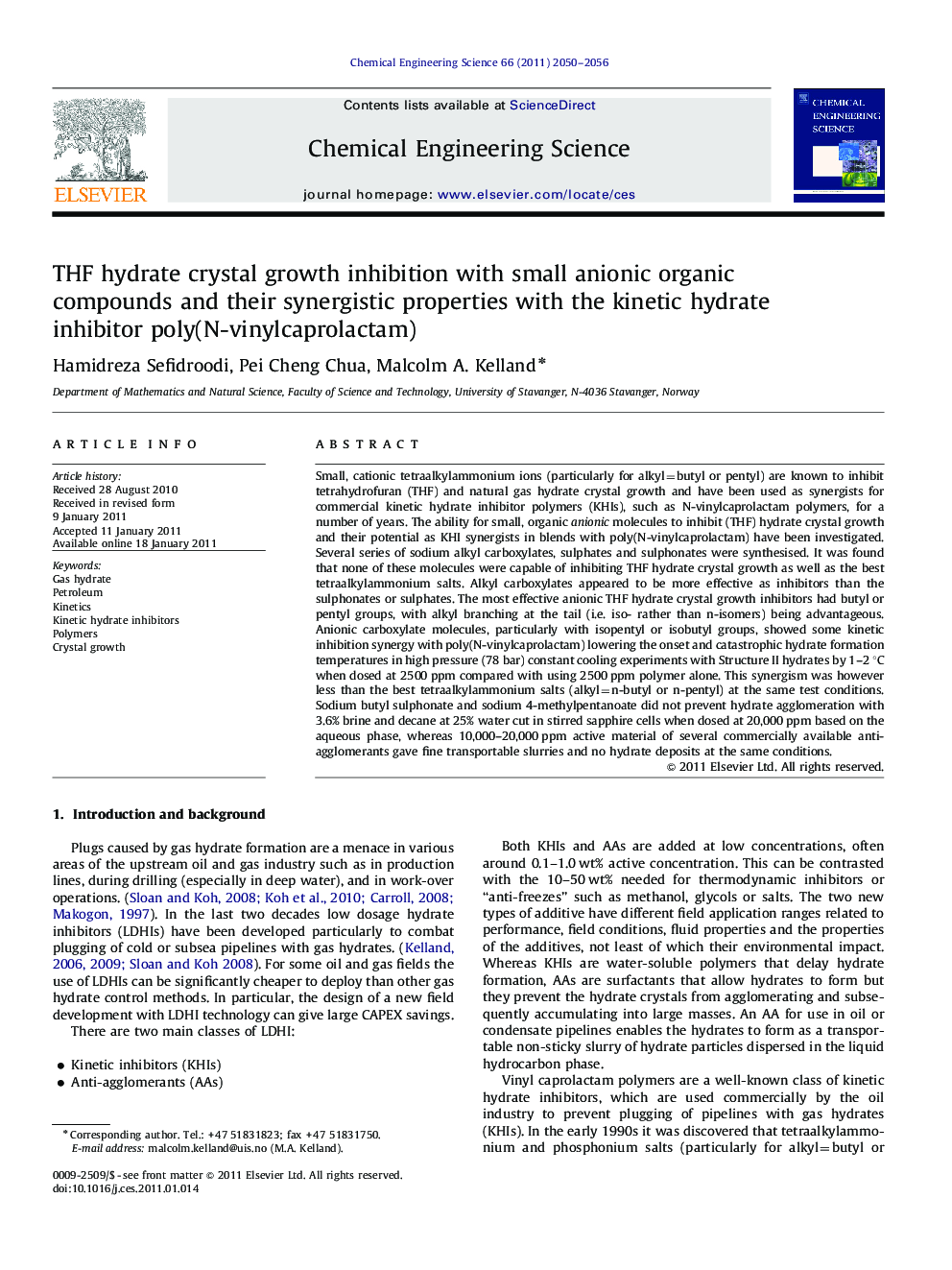| Article ID | Journal | Published Year | Pages | File Type |
|---|---|---|---|---|
| 156725 | Chemical Engineering Science | 2011 | 7 Pages |
Small, cationic tetraalkylammonium ions (particularly for alkyl=butyl or pentyl) are known to inhibit tetrahydrofuran (THF) and natural gas hydrate crystal growth and have been used as synergists for commercial kinetic hydrate inhibitor polymers (KHIs), such as N-vinylcaprolactam polymers, for a number of years. The ability for small, organic anionic molecules to inhibit (THF) hydrate crystal growth and their potential as KHI synergists in blends with poly(N-vinylcaprolactam) have been investigated. Several series of sodium alkyl carboxylates, sulphates and sulphonates were synthesised. It was found that none of these molecules were capable of inhibiting THF hydrate crystal growth as well as the best tetraalkylammonium salts. Alkyl carboxylates appeared to be more effective as inhibitors than the sulphonates or sulphates. The most effective anionic THF hydrate crystal growth inhibitors had butyl or pentyl groups, with alkyl branching at the tail (i.e. iso- rather than n-isomers) being advantageous. Anionic carboxylate molecules, particularly with isopentyl or isobutyl groups, showed some kinetic inhibition synergy with poly(N-vinylcaprolactam) lowering the onset and catastrophic hydrate formation temperatures in high pressure (78 bar) constant cooling experiments with Structure II hydrates by 1–2 °C when dosed at 2500 ppm compared with using 2500 ppm polymer alone. This synergism was however less than the best tetraalkylammonium salts (alkyl=n-butyl or n-pentyl) at the same test conditions. Sodium butyl sulphonate and sodium 4-methylpentanoate did not prevent hydrate agglomeration with 3.6% brine and decane at 25% water cut in stirred sapphire cells when dosed at 20,000 ppm based on the aqueous phase, whereas 10,000–20,000 ppm active material of several commercially available anti-agglomerants gave fine transportable slurries and no hydrate deposits at the same conditions.
